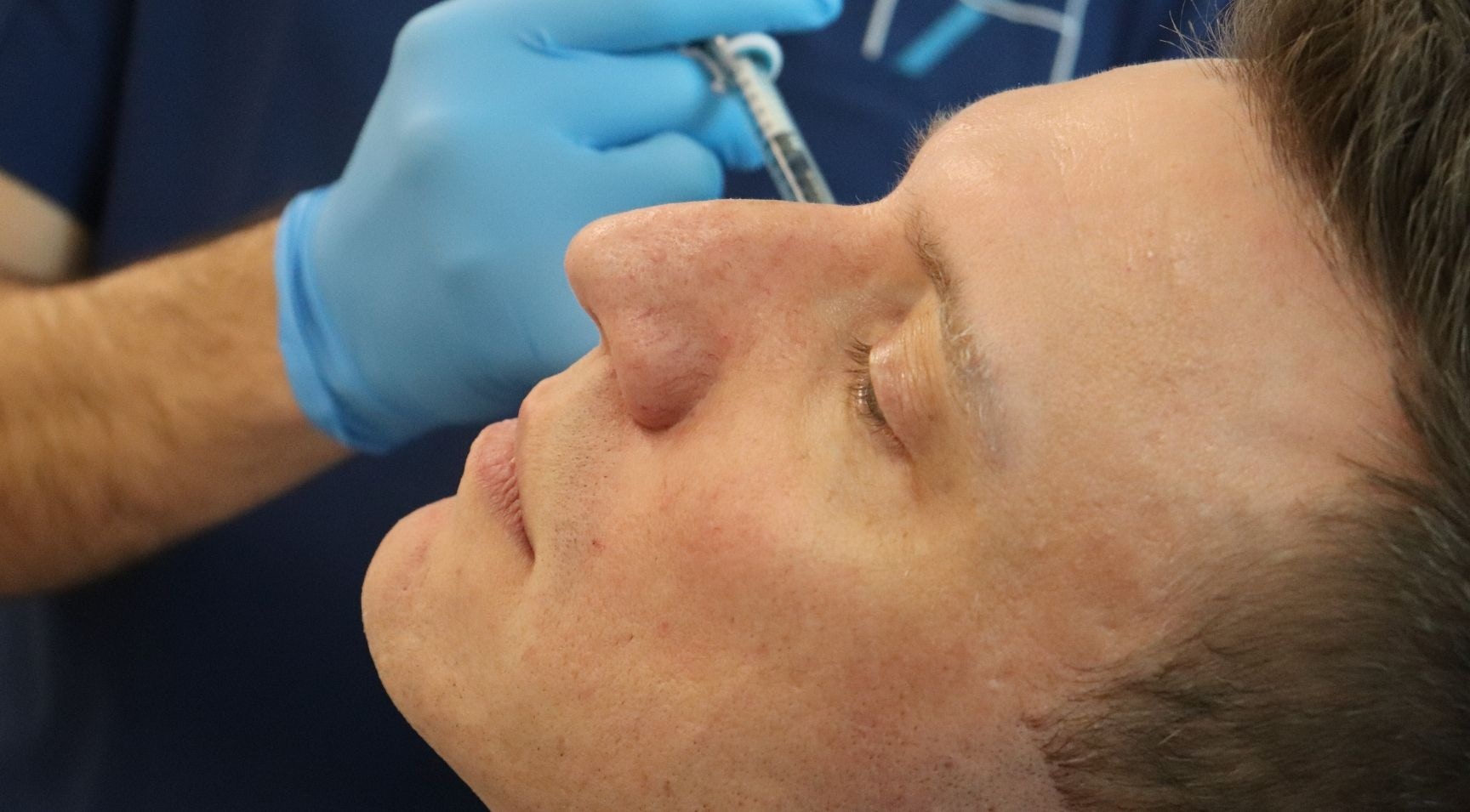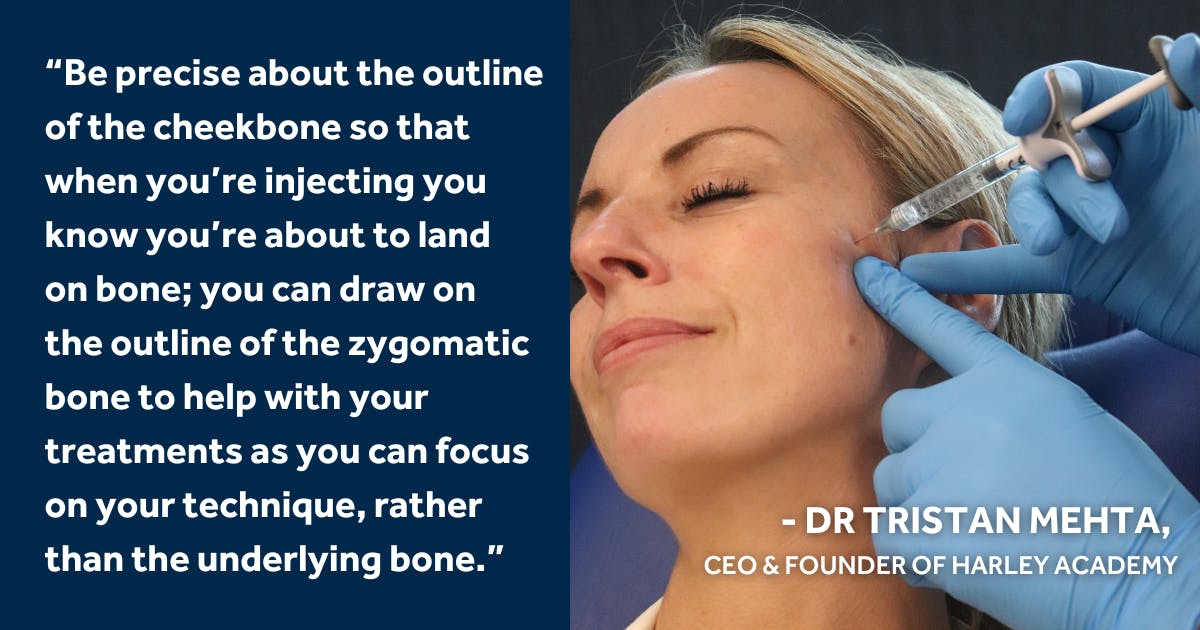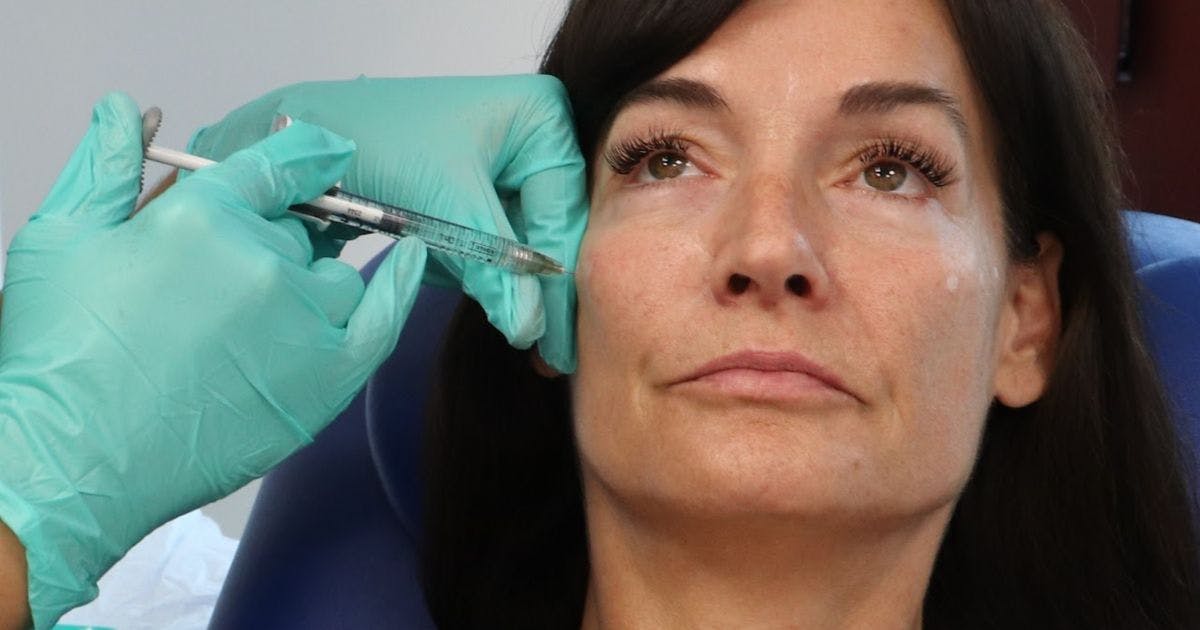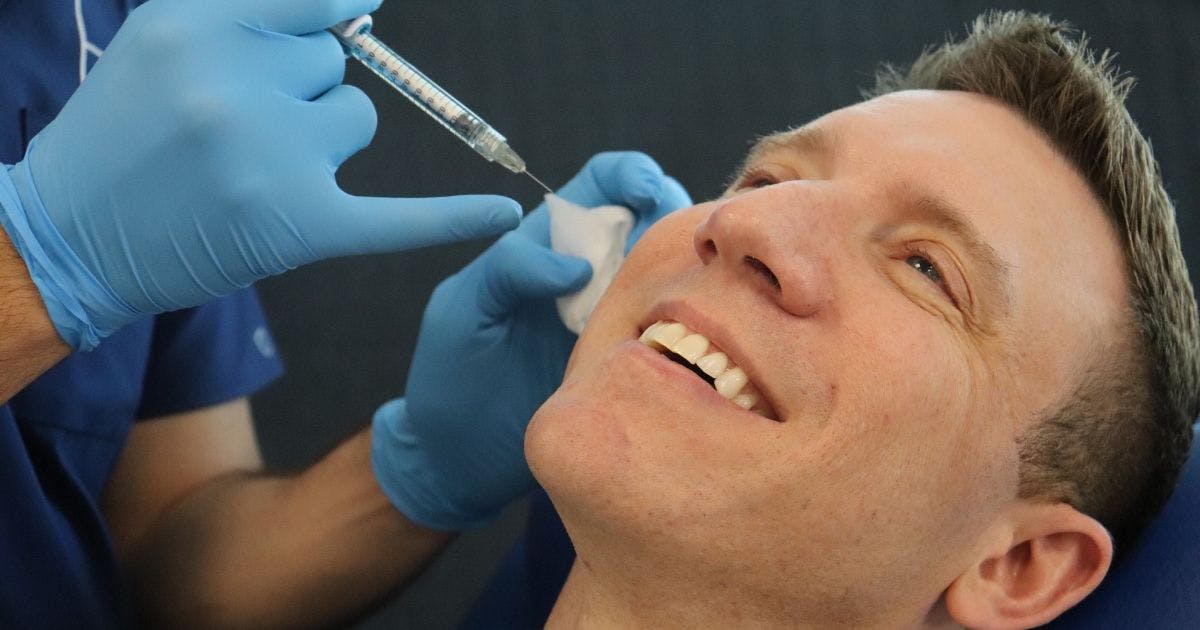How to Avoid Common Cheek Filler Mistakes as a New Injector

Learn how to identify and avoid common cheek filler mistakes and expand your aesthetics knowledge!
Cheek treatments are the best treatments to start with as a new injector. Most patients benefit aesthetically from some cheek treatment and it’s considered a safer area for those less experienced.
However, making mistakes is all part of the learning process, even in aesthetic medicine. This is especially the case if you’re a new aesthetics practitioner and you’re early on in your journey.
However, by highlighting some of the errors we frequently see novices making, we hope you’ll be able to avoid some of these common missteps.
Additionally, as your theoretical and practical skill sets grow, you’ll gain the experience to be a safe, confident and ethical injector.

Common cheek filler mistakes new aesthetics practitioners make
There are four main areas where cheek filler mistakes tend to occur if these are not properly considered. These are:
- A lack of understanding of your patient’s goals and why they want treatment
- Not exploring their facial aesthetic and proportions holistically
- Indecision with bespoke treatment planning tailored to your patient
- Preventing complications.
Here we explore various factors that contribute to errors in each instance, so you can start perfecting your cheek filler appointments!
Insufficient cheek filler consultations
Providing a thorough facial assessment and consultation are the first steps to understanding your patient’s aesthetic concerns and goals. This is arguably the most important step of the process.
By having an in-depth clinical consultation - always face-to-face - you can establish the information you need to tailor an appropriate treatment plan. This includes:
- Suitability for treatment and any identification of contraindications
- Understanding why your patient wants cheek filler - explore their reasoning
- Are they having this done for a particular occasion? If so, check the timing works
- Discuss realistic expectations and what can reasonably be achieved in line with their existing anatomy and budget.
If you gather enough information from these discussions, you should be able to put together a personalised treatment plan that works for your patient.
Make your patients feel comfortable
One element you should never overlook from the very start of every appointment is making your patient feel comfortable. By taking the time to do this, they’ll feel more comfortable sharing with you and the better your consultation goes, the better the outcome tends to be.
As an aesthetics practitioner, it’s up to you to build trust, showcase your knowledge and expertise to create a safe space where they feel heard. Maintaining a calm and reassuring demeanour will also help to ensure this goes well.
- You can reassure your patient by explaining:
- You are a medical professional with an in-depth knowledge of injectables
- The level of medical aesthetics training you have undertaken and your qualifications
- You only use quality products
- They can gradually build up their results over sessions
- You respect their natural proportions.

What can happen if your consultation isn’t thorough enough
Not taking the time to have a meaningful discussion where you establish a solid understanding of your patients’ goals maylead to poor results. You may misunderstand what they’re trying to achieve, or they may not have actually been looking for cheek filler at all.
As the medical aesthetics professional, it’s up to you to decipher what treatment the patient is looking for, based on the results they want. They may not have the understanding or anatomical knowledge required to determine when lateral versus medial volume is required, for example. Or it may be that they’re looking for tear trough filler but their friend’s tear troughs looked better after cheek filler so they assume that’s what they need too…
If your consultations are not sufficiently in-depth, with openness and empathy, the results may not meet the patient’s expectations.
Furthermore, if your cheek filler patient isn’t comfortable, or is particularly nervous, this can make you feel nervous, too. This is a classic issue that can lead to mistakes.
Not providing holistic facial assessments
Cheek filler is an individual mid-face treatment. You may be treating multiple layers, but it’s still about addressing the one region. Despite this, it’s vital to assess your patient’s face holistically - take in their full face, not just the specific areas being treated.
If you don’t assess the face as a whole, you’re likely to end up with unnatural results that don’t work with your patient’s proportions. Facial shape is an important consideration.
There are a number of factors you should take into account during this assessment, before you start marking up your patient for cheek filler.
Age
As we age, our skin’s collagen production declines and it begins to lose its elasticity. With this in mind, you must assess all the skin’s layers as ageing isn’t confined to just one layer.
If replacing lost volume is the aesthetic aim, you’ll most likely need to treat multiple areas, including the:
- Zygoma and apex
- Preauricular
- Deep medial cheek
- Medial SOOF.
For younger patients, the aim may be to beautify the area or to create more definition. In each instance, your treatment plan will be dependent on your patient’s unique facial anatomy.
Gender
Gender presentation considerations are also important. Always confirm your patient’s aesthetics goals during your consultation. This open discussion informs your treatment plan and ensures an approach that they’re happy with and you’re comfortable administering.
Female-presenting people tend to have higher, more contoured cheekbones and fuller deep medial cheeks. Male-presenting people tend to have a flatter mid-face.
Within gender, it’s a good idea to factor in the patient’s face shape. For example, for a patient with a round face, you’d want to avoid injecting too much medial cheek filler as this could create a “pillow face” appearance. Instead, you may want to focus on the zygomatic contour to create a flat but angular look.
Ethnicity
When it comes to facial appearances and preferences, there are huge variations across ethnicities and cultures.
For example, East Asian patients naturally have flatter medial cheeks, often with full, sculpted cheekbones. Assuming a Caucasian or South Asian patient should be treated the same way is inappropriate.
Therefore, it’s crucial to understand how to properly assess patients of all ethnicities with knowledge of proportional differences and traditional societal preferences. This kind of detailed aesthetics learning is what will make you stand out from the crowd. You’ll also have patients returning consistently for a tailored injecting experience.

Overfilling the cheeks
Cheek filler is one of the first treatments taught to new injectors.
As with any injectable aesthetics treatment, overfilling is always a possibility. Overfilling the cheeks can create an unnatural aesthetic, resulting in “chipmunk cheeks” or “pillow face.”
Due to the anatomy of the cheeks, overfilling can affect the appearance of the eyes and mouth. This could further impact your patient’s psychological well-being or cause distress.
In terms of the physical consequences, overfilling can disrupt the local lymphatics which can lead to oedema.
It’s important to remember that the cheeks are a large and complex anatomical system. Having a solid understanding of facial anatomy ensures you know how to avoid overfilling.
If you need to broach this with your patient who is concerned about overfilling, we’d advise doing so sensitively. Discuss the options with them which can include:
- Building up treatments over time
- Dissolving the filler
- Assessing during a review appointment
- Let the filler dissolve naturally.
Not knowing how to prevent bruising from cheek filler
Bruising is a common side effect of any filler, especially with certain patient groups, like older patients with more fragile tissue. It can happen to any injector, however, it’s generally something new injectors are more prone to.
There are a few different ways aesthetics practitioners can prevent bruising from cheek filler injections.
Use the correct tools
The first is to ensure you’re using the correct tools. Typically, a 27 g needle is used for cheek injections. Most new injectors start doing cheek treatments with a needle.
A cannula can also be used to minimise sharp entries and the number of injection points. This may be a tool you want to start using after some training.
Pick an appropriate product
Remember to choose the best filler type depending on which area of the cheek you are treating.
You will use higher G prime products deep for your supraperiosteal deposits. This means you can project the tissues overlying.

Injecting techniques to prevent cheek filler bruising
Static boluses onto layer five - the periosteum - with a needle are associated with less bruising visibility and could be considered as the best technique to minimise bruising. We advise withdrawing the needle slowly after each bolus to minimise bleeding as well. Other technique tips to implement include:
- Ensuring a steady hand, especially when aspirating
- Injecting fewer injection points keeping boluses small
- Slow movement and approach, entering and exiting gently
- Good aftercare advice, for example, asking the patient to avoid ibuprofen use post-filler treatment.
Targeted cheek filler aesthetics training
Safety and ethics are at the forefront of our aesthetics training here at Harley Academy.
Cheek filler training is a core aspect of our Level 7 Diploma in Botox & Dermal Fillers course. This is an Ofqual-regulated and JCCP-approved, postgraduate level qualification.
The above injecting techniques are also covered in our Facial Contouring Masterclass.
Through mentor-led training, you’ll enhance your knowledge of mid-face and lower face anatomy. Furthermore, you’ll understand the impact of ageing and potential complications in those specific regions.
During your Masterclass, you’ll get the opportunity to treat your own patients - provided by us - under specialist supervision, at our dedicated City of London aesthetics training campus. This allows you to really zone in on treating these popular regions and improve your cheek filler confidence.
All information correct at the time of publication
Download our full prospectus
Browse all our injectables, dermal fillers and cosmetic dermatology courses in one document
By submitting this form, you agree to receive marketing about our products, events, promotions and exclusive content. Consent is not a condition of purchase, and no purchase is necessary. Message frequency varies. View our Privacy Policy and Terms & Conditions
Attend our FREE open evening
If you're not sure which course is right for you, let us help
Join us online or in-person at our free open evening to learn more
Our Partners













STAY INFORMED
Sign up to receive industry news, careers advice, special offers and information on Harley Academy courses and services

